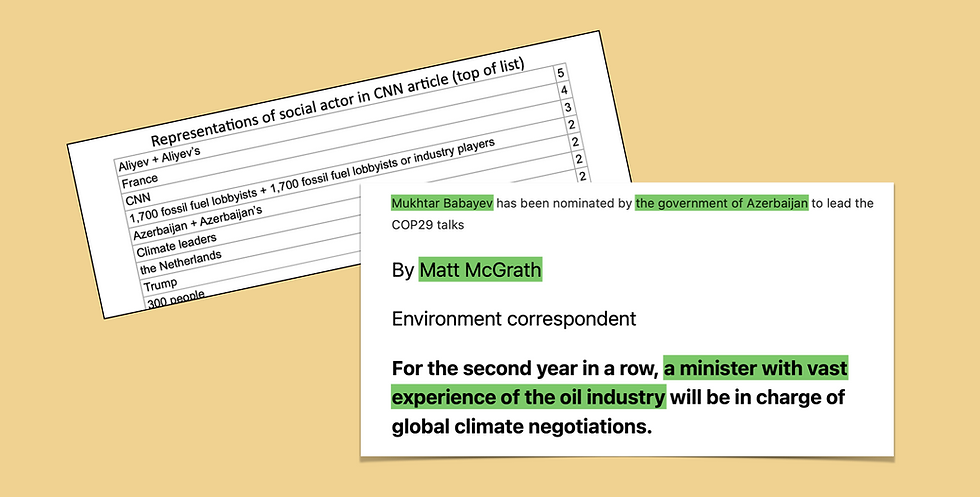Analysing the Representation of Social Actors in Text and Discourse
- Michael Farrelly
- Jun 18
- 2 min read
Updated: Jun 27

I’ve been analysing the representation of social actors in text and discourse for many years now. I first used Theo van Leeuwen’s system for analysing the representation of social acts for my PhD, which I completed in 2006. I found this system incredibly useful at the time and have continued to do so in many discourse analytical projects since. If anything, I find analysing the representation of social actors has become more useful to me the more I use it.
For example, in a chapter of Critical Policy Discourse Analysis, I argued that analysis of social actors can be a good way into understanding how a particular policy idea or problem is conceptualised. The reason for this being that policy is very much about some people doing things to, for, or on behalf of other people. Analysing how people are represented, therefore, gives us a clue as to how that policy issue is understood in terms of who it is thought will do what to whom.
I believe this idea of understanding how something is conceptualised - and getting at that conceptualisation through an initial analysis of the representation of social actors - is much more widely applicable than just to policy. I think it applies to many areas of our shared and collective lives - anywhere that understanding who is involved in a situation and how they relate to each other and to actions and circumstances is important.
I’ve also found over the years, through practice and application, that there are some technical issues that are very much worth clarifying and exploring when identifying and analysing the representation of social actors.
The analysis of social actors brings up many technical issues, including:
identifying what we mean by a social actor
what to do in the case of ambiguity
what we do in the case of what I am going to call ‘embedded social actors’
and many other issues besides.
I can also see that a systematic analysis of the representation of social actors has the potential to tell us more about text and discourse than we might have realised.
In a recent episode of my podcast, Language and Power, I suggested that an analysis of the representation of social actors in texts might be a way of understanding how concrete or abstract a particular text might be. The idea here is that the more social actors are present in terms of social actors per word in a text in what I call ‘density’, the likelier that text is to be more concrete and less abstract.
In the blog series that follows, I intend to explore and define some of these issues more clearly, offer some insights from my experience having applied this system to many texts over the years, and to invite discussion and development with the wider discourse community.
If you’re interested in learning more about analysing the representation of social actors in text and discourse with me, I’m putting on a live online class for each of the topics I mentioned above.

Comments